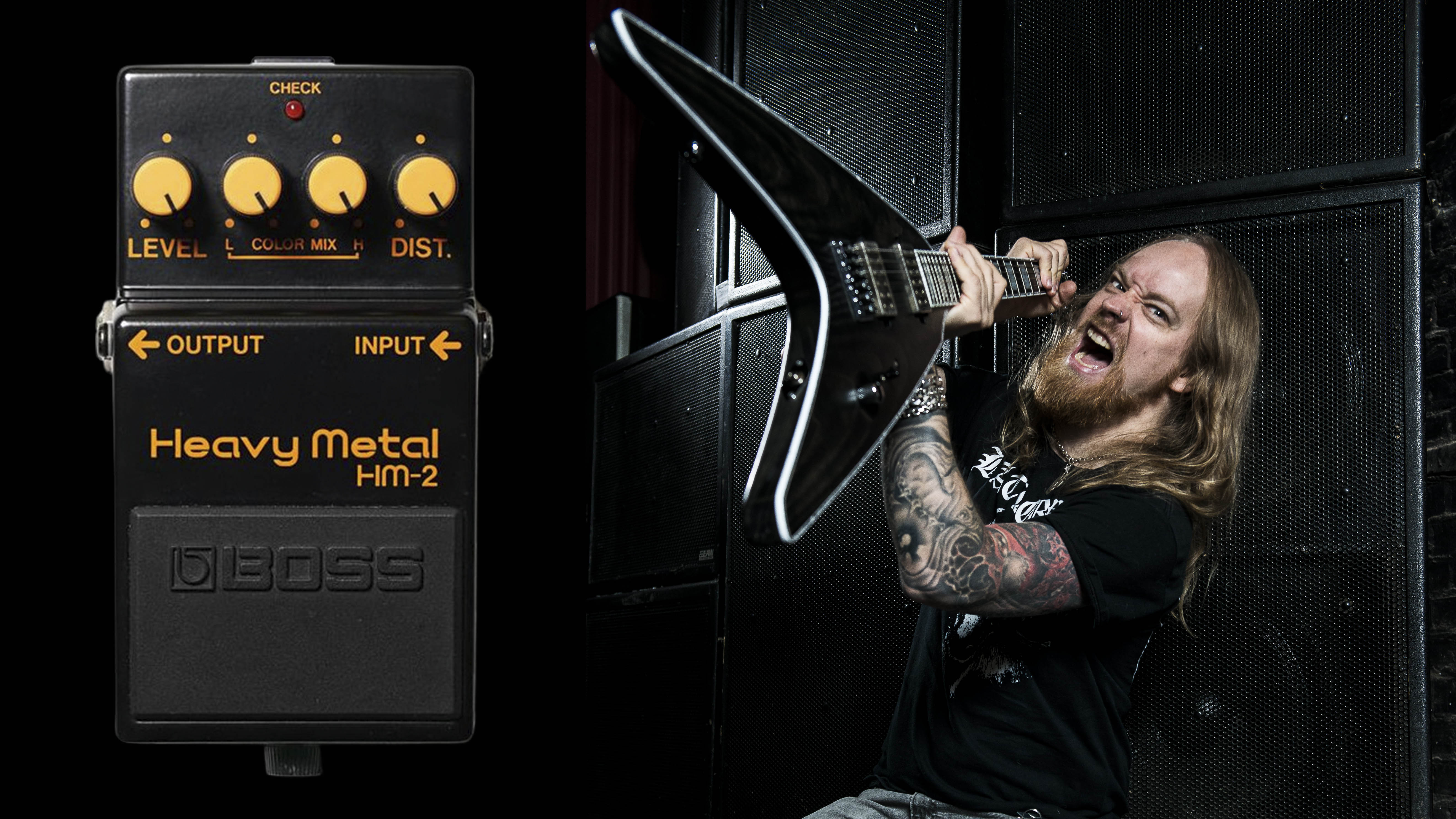25 of the greatest guitar tones of all time
Iconic moments from Hendrix to Homme, and Marr to Marvin – plus how they got the sounds
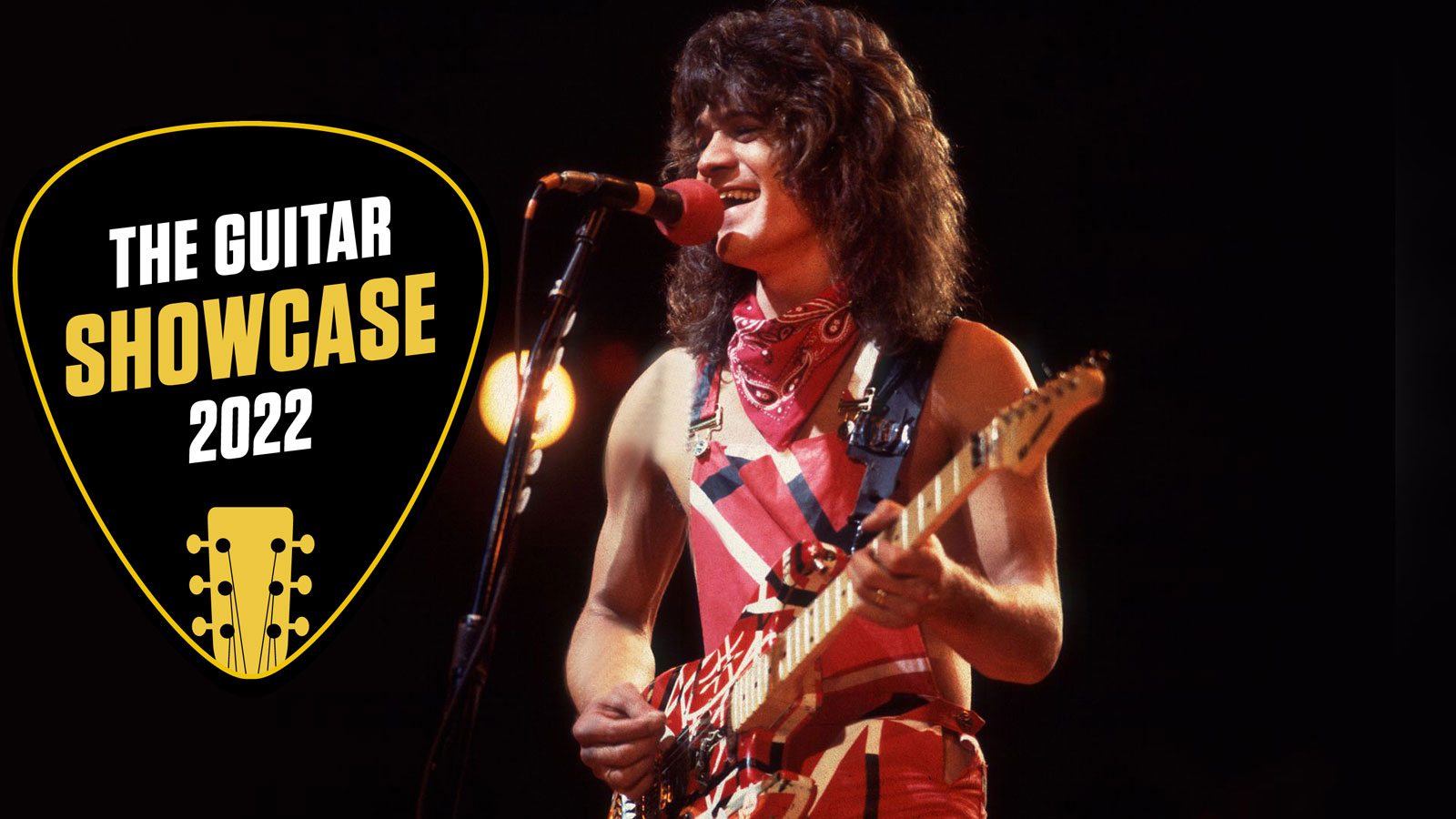
GUITAR SHOWCASE 2022: Whether it’s The Edge‘s ricocheting delays, or Keith Richards’ buzzsaw fuzz, we can all name a tone that has stopped us in our tracks.
As guitarists, we’re particularly susceptible, compelled even, to unpack these sounds – to figure out the blend of circuitry and sorcery that has resulted in our favourite tones.
Of course, the debate rages on over the hows and whys of the most iconic guitar tones. Indeed, even the players themselves are given to forgetting or mis-remembering the gear and circumstances that led to their creation.
And as for deciding the best? Well it's entirely subjective. There cannot be a ‘definitive’ list of the 25 greatest tones ever in order; that’s an impossible task.
Instead, we’ve unleashed the tonehounds and hunted down 25 of the best classic sounds you can achieve with accessible gear. And we’re covering a world of possibilities in the process with valuable tips these tones can teach us that all players can benefit from.
From Hendrix to Homme, and Marr to Marvin, and not in any particular order, it’s time to dust down the pedalboard and fire up your valves for tone city…
1. Where The Streets Have No Name
When I use two delays, I like to mess with the pitch modulation of the delay signal
The Edge
Player: The Edge | Album: The Joshua Tree (1987)
Get the MusicRadar Newsletter
Want all the hottest music and gear news, reviews, deals, features and more, direct to your inbox? Sign up here.
We’ll stand on a box in a crowded room and boldly declare this is the most iconic use of delay ever; a guitarist using the effect to craft iconic parts. To hear The Edge’s cascading notes bouncing across the stands of a stadium is a rock rite of passage that has to be witnessed. But, boy, does he make us work to get it for ourselves. Yes you’ll need two delays to nail it, and modulation too. The good news is TC Electronic’s Flashback delay models the exact TC unit the man himself uses onstage.
“They work together to become a part of one delay sound,” was The Edge’s reasoning to Guitar World for using two different delays at once. “When I use two delays, I like to mess with the pitch modulation of the delay signal. It increases the depth of the sound and gives it a tremendous 3-D sensation. But straight slapback echo with no modulation isn’t very inspiring; the shape of the sound doesn’t change.”
Parts of Streets... are composed with this deeper and wider delay in mind. Though The Edge sends his signal to two Vox AC30s, routing delays to separate amps for greater control over the mix is a luxury most of us won’t be able to afford, but there’s more going on here than just stereo repeats.
The percussive shimmer needs single coils, preferably a Strat like the man himself, and some Tube Screamer drive will give just the right transparency to let your chime shine. If you can’t get access to two delays, try increasing the feedback repeats on one. Our delays are set to a dotted eighth3. note (360ms) and a quarter note (480ms), tying in with the track’s 125bpm tempo.
2. My Iron Lung
Player: Jonny Greenwood | Album: The Bends (1994)
Jonny Greenwood’s pitch-shifted refrain in this Bends-era track remains a standout in Radiohead’s cornucopia of ingenious effects moments.
To achieve the robotic opening salvo, Greenwood played his arpeggiated lick through an original DigiTech Whammy pedal, set to one-octave-up plus dry signal. The original Whammy was monophonic, so it couldn’t track the ringing notes from the altered EGDGBE tuning, lending the track its glitchy, lo-fi appeal.
Jonny employed an HS-configured Fender Telecaster Plus and Fender Twin for the recording, before switching to a Marshall Shredmaster running through a Fender Eight-Five combo for the distorted chorus and solo.
3. How Soon Is Now?
Player: Johnny Marr | Album: Hatful Of Hollow (1984)
Johnny Marr’s crowning achievement in The Smiths soundscapery is often heralded as a tremolo-pedal classic, but the actual recording is far more complex than that.
The original track features an Epiphone Casino running through a Fender Twin, which was then played back through four Twins set to the vibrato channel. Johnny Marr and producer John Porter struggled to keep the parts vibrating in time, which resulted in the pair recording the riff in 10-second bursts.
Thankfully, nowadays you can get a remarkably similar effect using a square-wave tremolo, especially using tap tempo to sync it to the track’s bpm. Not that Marr opts for that.
4. (I Can’t Get No) Satisfaction
I was imagining horns
Keith Richards
Player: Keith Richards | Single: (1965)
The story goes that on 7 May 1965, Richards woke up in the night at his hotel room in Florida on tour with the riff and opening vocal line in his head.
It initially became an acoustic song when the Rolling Stones tracked at Chess Studios in Chicago. But Richards’ acquiring a Maestro FZ-1 FuzzTone suddenly turned things snarly, likely with his Bigbsy-fitted ’59 Les Paul. Gibson were also the company behind Maestro and launched the FZ-1 back in 1962 but sales didn’t take off until Keef’s patronage.
“I was imagining horns,” Richards said in his 2010 autobiography, Life, “trying to imitate their sound… the fuzz tone came in handy so I could give a shape to what the horns were supposed to do.”
5. Voodoo Child (Slight Return)
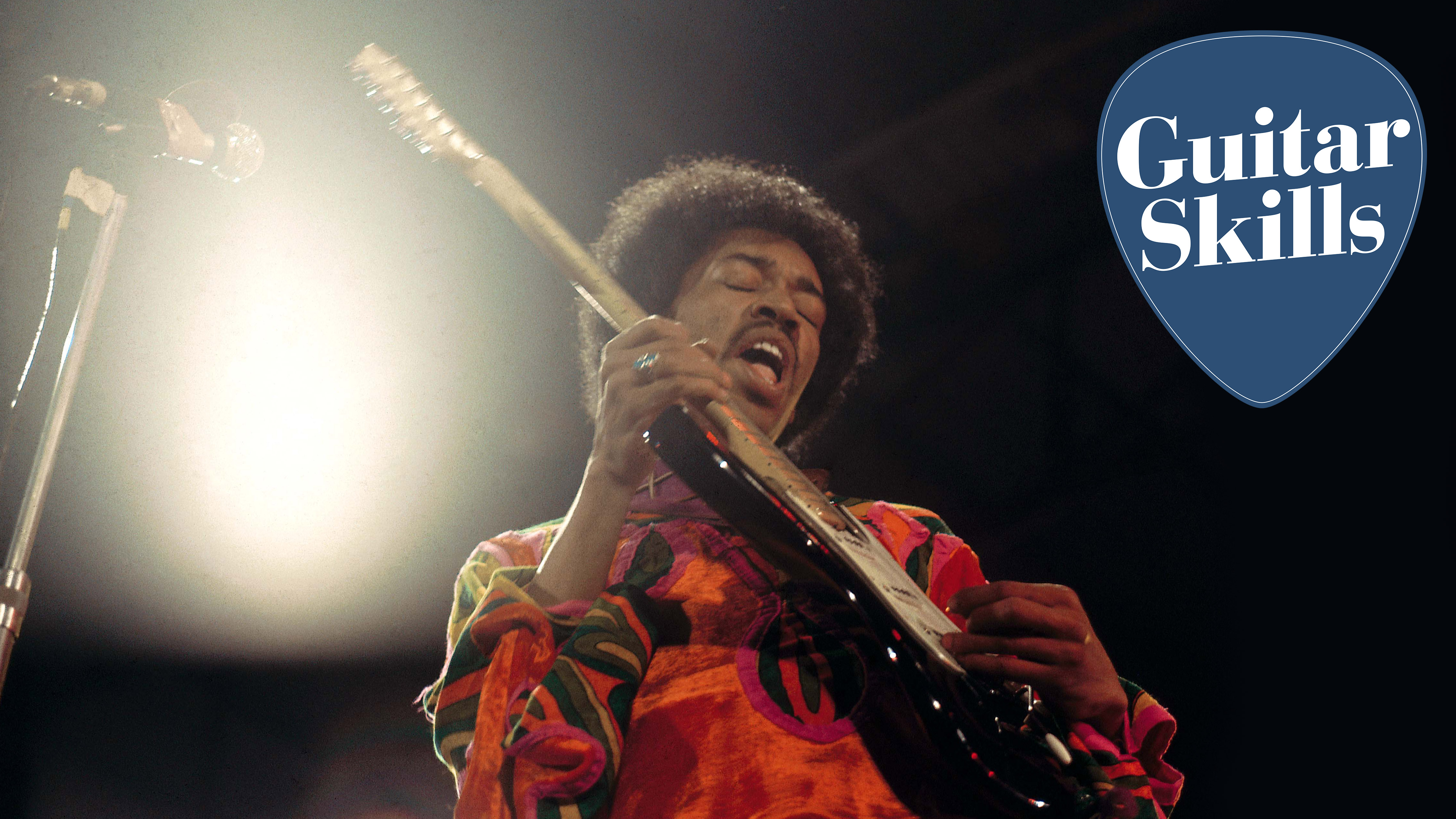
Player: Jimi Hendrix | Album: Electric Ladyland (1968)
If you’re ever in doubt about the timeless power of an electric guitar, just play the five minutes of this song to remind yourself of what it can be. His ability was otherworldly but Jimi was equally as maverick with his tone. The two facets blend here for guitar nirvana. There is no exact record of what Jimi used in the studio but his go-to guitars were contemporary standard Strats from the time, strung upside down, and the unidentified amp here is clearly being pushed hard into wonderful places.
The ingredient for fattening the single-coil tone is from his Fuzzface - though Jimi’s Eb tuning helps. There’s also one of the greatest showcases of wah ever - on a Vox model - and it sounds like he’s playing that intro on the neck pickup before switching to the bridge when it kicks in. Be open to compromise on effects choice.
Neville Marten, editor of our sister publication Guitar Techniques and pro touring musician, recently had the task of nailing this tone for sets paying tribute to Hendrix and Clapton as The Cream Experience:
“Wah and fuzz are not natural bedfellows but Jimi somehow makes it work,” he explains. “I’ve resorted to using a Vox wah with a [Paul Cochrane] Timmy pedal [a Fulltone OCD would work well too], through a Marshall Plexi model in my Line 6 Helix, cranking the amp volume but keeping the drive low on the distortion pedal. I feather the guitar’s volume control (as Jimi did) and also switch between neck pickup (for intro and early sections) to bridge (for later fi lls and solos), switching back and forth on the fly.”
Those with a keen ear will notice panned slapback delay on the track too.
6. Round Midnight
Player: Wes Montgomery | Album: The Wes Montgomery Trio (1959)
A self-taught player who learned by immersing himself in Charlie Christian records, Montgomery is the sort of maverick who comes around once in a generation. His tone is the perfect synthesis of feel, technique and gear, in that order.
Montgomery later became synonymous with the Gibson L-5CES hollowbody and a 1965 Standel Super Custom XV, but here he’d have most likely played a Gibson ES-175 through a Fender Super Reverb. His thumb technique was crucial and you can’t buy that on Denmark St, so get practising!
7. No One Knows
Player: Josh Homme | Album: Songs For The Deaf (2002)
The QOTSA brain trust keeps its own counsel on gear and tone. But this much we know: Homme is a vintage gear aficionado, favouring guitars by Ovation, Maton and Motor Ave. He loves Ampeg’s VT series combos but recently revealed that the unexpected secret weapon for this song was a little Peavey Decade practice amp.
Having played a Maton MS500 in the No One Knows video, we’d bet one would have been in the studio, too. He’s a neck pickup guy but his tone is never muddy. In the video below, producer Eric Valentine explains how the whole Songs For The Deaf album sees a lot of midrange frequencies boosted on the guitars, with few pedals used.
But for the rest of us, stompboxes such as the Stone Deaf PDF-1 add the dirt, and the likes of the Fulltone Fat-Boost can hold it together.
8. Sweet Child O’ Mine
Player: Slash | Album: Appetite For Destruction [1987]
It’s so easy… Just take a ’59 Les Paul replica, built by luthier Kris Derrig and equipped with Seymour Duncan Alnico II humbuckers, and run it hard through a hot-rodded Marshall JCM800, or a 1987 Marshall Jubilee 2555. Easy!
But Slash’s feel, adjusting his guitar’s tone and volume pots on the fly, is an alchemy beyond us mere mortals. On the intro riff, he uses the neck pickup, with the tone set to about 2 and playing just past the point of break-up - this is about volume rather than slathering on gain.
An act of eighth-note discipline makes it all the more spectacular when he cuts loose with the bridge pickup and wah on the more intense part of the solo. And don’t forget plenty of reverb!
9. Killer Queen
Player: Brian May | Album: Sheer Heart Attack (1974)
We could have so many great individual Brian May tones but his solo tone here is so instantly Bri we keep coming back to it. But with a heavily modified Red Special and equally hot-rodded AC30, can we all get it?
A Voxy combo is certainly a good place to start but you’ll need to up your gain and mid with a single coil. Some of the character here is also provided by the room mic that was in the studio - so is there a pedal for that? Yes, it’s your delay. But keep it short with no feedback to simulate that sound hitting the mic with each millisecond simulating around a foot between cab and mic.
10. Plug In Baby
Player: Matt Bellamy | Album: Origin Of Symmetry (2001)
Long before he donned the rave shades, Matt Bellamy was a master of unusual guitar textures, and this neoclassical earworm is a fine example.
Z.Vex’s bonkers Fuzz Factory is the key to the opening tone: its germanium transistors can be teased into self-oscillation, which provides the initial squeals, before Bellamy launches into the heavily-driven riff, likely channelled via one of his custom Manson guitars, some of which have since been fitted with the pedal.
For the rest of the track, running a subtle slow phase before your drive pedals will help to capture the sense of movement that pervades throughout the track.
11. Message In A Bottle
Player: Andy Summers | Album: Regatta De Blanc (1979)
Let’s get straight to it, is it a chorus or is it a flanger? A fair amount of people hold this tone up as a classic example of the marriage between electric guitar and the chorus effect. But it’s not.
Andy Summers used an Electro-Harmonix Electric Mistress flanger, but to be fair, its character is quite a watery shimmer. Summers would add a Boss CE-2 to his board later in the trio’s touring life but it’s perhaps odd his early work with The Police is so associated with an effect he didn’t actually use on his most iconic tones.
Nevertheless, it’s not the only pedal involved here. Listen and you’ll notice how he ups the shimmery ante in the chorus as his chords ring out; some claim it’s MXR’s classic Dyna Comp compressor (at the end of the chain) and tape delay in the mix - likely an Echoplex unit. Our ears don’t actually detect the latter in most of the song though.
Summers was a one-guitar man in the early days playing a 1963 Telecaster that had already been modded by the time Summers bought it with some unusual features to make it a versatile instrument (a Gibson PAF neck humbucker and an out of phase switch). More unusual was its built-in preamp controlled by an on/off switch and a gain control.
“It was the one guitar I used for everything,” Andy told us. “I did start using a Strat later on, but this was the Tele that got used all the time, on all the records. It had everything I needed in one.” Amp specifics are tricky says the man himself… “I can’t remember a fucking thing about the amps on The Police records… it makes me laugh,” he told us earlier this year. That stuff is for the real nerds.” Sorry, Andy, we are guilty as charged!
12. Sultans Of Swing
Player: Mark Knopfler | Album: Dire Straits (1978)
While it’s definitely applicable for all the examples in this feature that a significant degree of the tone is in your hands, that adage is especially relevant here. Of course there’s a recipe for Mark Knopfler’s cleanish tone here with essential ingredient, but equally important is the relationship between his picking hand and the strings. And that’s going to take time - but the payoff could open new doors for you.
For now, let’s start with the gear… The song goes right back to the roots of the band - it was present on their first demo, telling the story of a London jazz pub band in Knopfler signature laconic style, it was completely at odds with the new wave and punk bands of the time.
The balance of space and detail in Knopfler’s playing nods clearly to his Americana influences - indeed it was originally written in open tuning on a National Steel guitar that would later become synonymous with the band for 1985’s Brothers In Arms. Things changed when Knopfler bought his red ’61 Strat in 1977 and tried it again in standard. And the tonality of the Strat is all over this song - it’s one of the great recorded Fender tones.
“It’s just a Fender Twin and the Strat,” Knopfler told our US sister mag Guitar World, “with its three-way selector switch jammed into a middle position that gives it its sound, and I think there were quite a few five-way switches installed as a result of that song.”
Then there’s that finger approach. The outro is fingerpicked, and that can seem daunting going at the 148bpm tempo but everything with guitar can be approached in a manageable way by building your speed up slowly with the four note picking pattern; thumb the first note, pull-off to the second note, thumb-pick the third note and use your first finger to pick the last note.
13. Rock Bottom
Player: Michael Schenker | Album: Phenomenon (1974)
One of rock’s most almighty pentatonic pyrotechnicians, Michael Schenker’s tone would have been hot already, with his trusty Gibson Flying V going into an overdriven 50-watt Marshall Plexi, but with his signature cocked wah (or parked wah) manoeuvre, he could move through frequencies alien to other guitarists.
A cocked wah is simply the practice of using a wah-wah in a fixed position and finding the sweet spot for your tone.
On UFO’s Rock Bottom, Schenker’s wah is dialled to maximise his midrange, delivering a chewy crunch that sounds combustible - especially on the spectacular performance captured on UFO’s live album, Strangers In The Night.
14. Killing In The Name
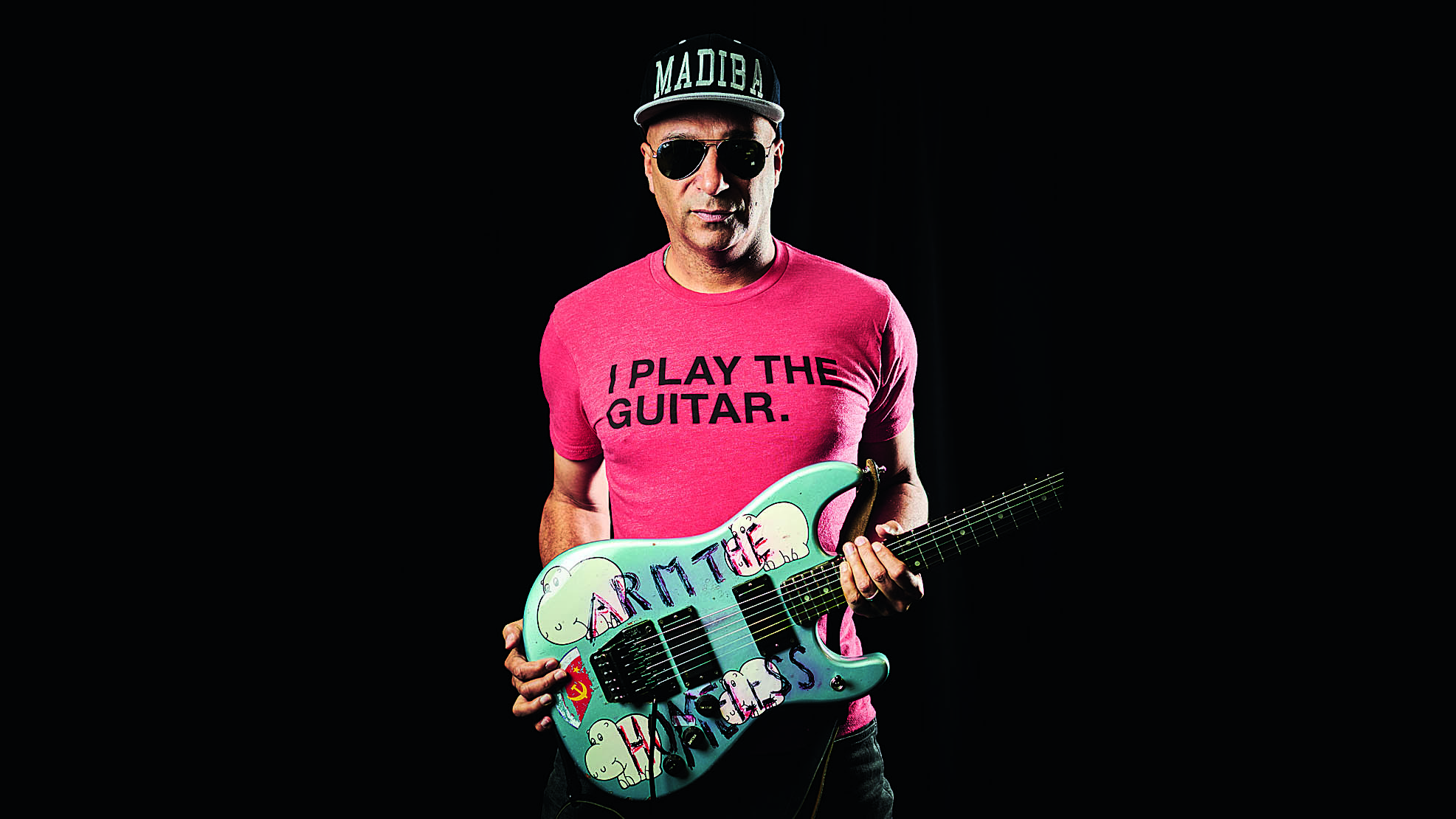
Player: Tom Morello | Album: Rage Against The Machine (1992)
For a guitarist who has wrung so many otherworldly sounds from his instruments, Tom Morello has always had a simple, to-the-point rig.
That setup is exemplified on Rage Against The Machine’s most iconic track, Killing In The Name, which features Morello’s long-serving Mexican standard ‘Sendero Luminoso’ Telecaster - his go-to for drop-D riffs - set to the neck single coil, running into his trademark 50-watt JCM800 head.
Throw in a flanger for the intro (Morello used an '80s Ibanez DFL), and, of course, an original Whammy pedal set to two octaves up for the solo, and you’ve hit upon one of the most explosive tones in rock history.
15. Drowned
Player: Uffe Cederlund (rhythm), Alex Hellid (lead) | Album: Left Hand Path (1990)
There are few things as revered among underground metal’s inner circle than the Studio Sunlight Swedish death metal tone, as perfected on Entombed’s incendiary debut.
You could call it anti-tone, with Cederlund and Hellid’s guitars tuned down to B, dissolved in layers of fizzy distortion from a maxed-out Boss HM-2 in front of a solid-state Peavey Studio Pro 40-watt combo, but it proves that great tone is whatever best articulates what you want to say musically.
Cederlund credits producer Tomas Skogsberg for the sound that transformed his cheapo Ibanez into something so feral, morbid and aggressive it was nigh-on transcendent.
16. Sunshine Of Your Love
Player: Eric Clapton | Album: Disraeli Gears (1966)
If you’re a guitarist and you have ears, we’re assuming you must have heard the term ‘woman tone’ by now. But what does it actually mean? It means Clapton, and it’s good news for anyone looking for a lesson in using the tonal potential of their guitar.
When Slowhand hooked up with bassist/vocalist Jack Bruce and maverick drummer Ginger Baker he was already a guitarist who had been described as a ‘god’, but rather than resting on his holy laurels he sought to evolve his playing further in this new trio.
And right away on their first recorded song together with I Feel Free their ambitions for a new psychedelic slant on the blues rock were made clear. And Clapton was crafting a new sound for it at his fingertips; ‘woman tone’.
He was using his Les Paul at first but his hand-painted 1964 ‘Fool’ SG Standard would become synonymous with the band’s sonic tendencies on Disraeli Gears. Key song Sunshine Of Your Love’s harder edge approach was directly influenced by the riff ’s architect bassist / vocalist Bruce seeing Hendrix live in the UK.
The woman tone was in full force, especially on the solo here - with a cheeky nod to Blue Moon’s melody before blending the minor and major pentatonic. The tone uses the four control layout that applies to the LP and SG. And who better to explain than the man himself?
Over to you, Eric: “The woman tone is produced by using either the bass [neck] pickup or the lead [bridge] pickup but with all the bass [tone] off ,” he explained in a 1968 television interview you can see above. “And, in fact, if you use both pickups you should take all the bass off on the tone control. Turn it down to 1 or 0 on the tone control, and then turn the volume full up.”
Set your amp’s gain control to taste or experiment with an overdrive pedal to get closer to the tone. Max out the tone controls and, if your neighbours are out, crank your volume too.
17. Ain’t Talkin’ ’Bout Love
Player: Eddie Van Halen | Album: Van Halen (1978)
Guitar modding, amp-pushing, two-handed tapping… There were seemingly no 'rules' Eddie Van Halen couldn’t break. Before this maverick came along, you didn’t have humbuckers in Strats. At all. Enter the ‘Frankenstrat’, Eddie’s iconic black-and-white-striped axe, which featured a PAF ’bucker swiped from an ES-335 and powers this raucous debut album anthem. In the process, Eddie pioneered the ‘super-Strat’.
Eddie was also a leading proponent of high-gain tones, regularly running a Marshall Super Lead with volume and tone controls on 10. This was then run through a variable transformer to lower the volume before it hit an H&H power amp.
Not only did this sag and compression yield his legendary ‘brown sound’, but it also allowed him to employ an Echoplex EP-3 tape echo in between the Marshall and power amp without distorting the repeats. It’s this device that provides the slapback echo on Ain’t Talkin’ ’Bout Love’s staccato chords, although its preamp also works its own tonal magic.
And then there are EVH’s effects, masterfully employed to enhance key elements of the riff. In the intro, when Eddie hits the end of each cycle, he kicks in an MXR Flanger for a vocal sweep that tickles the eardrum. He also employs the same company’s Phase 90 for the track’s lead sections.
In today’s era of roaring distorted amps and all-encompassing multi-effects, it’s not too hard to pin down the sound, but the fact that Eddie was able to revolutionise guitar tone with a relatively limited array of tools is testament to his enduring legacy.
18. Cherub Rock
Player: Billy Corgan | Album: Siamese Dream (1993)
The opening of Smashing Pumpkins’ 90s opus Siamese Dream remains an exhilarating introduction to the Big Muff. Frontman Billy Corgan harnessed a V4 Op Amp version for the majority of the guitar tracks, which he ran into the low-sensitivity input of a 100-watt Marshall JCM800, with the master volume on full and the preamp volume set low.
His guitar of choice for this track was the ‘Bat Strat’; a ’57 reissue fitted with a set of Lace Sensor pickups, while the solo also features the volatile sound of the Fender Blender fuzz. Electro-Harmonix has now reissued the Op Amp Big Muff, putting Billy’s ripping fuzz tones within reach once more.
19. Under The Bridge
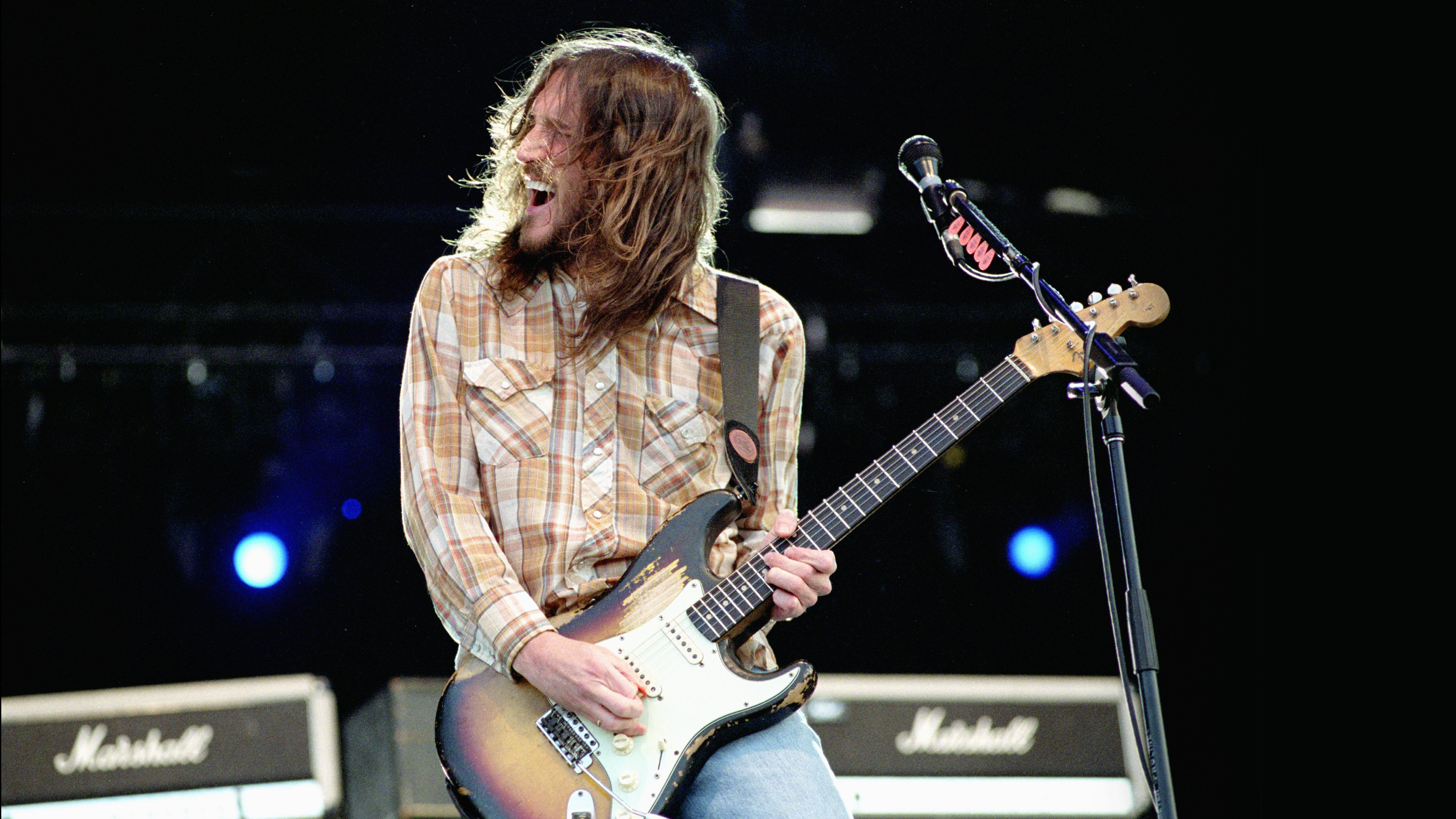
Player: John Frusciante | Album: Blood Sugar Sex Magik (1991)
A classic that was born back to front with Anthony Kiedis’s lyrics inspiring John Frusciante’s parts. The intro, if you’re doing it without a capo like John, requires a lot of awkward stretches and barring for young hands, and his use of thumb in his chord shapes in the song becomes vital to nailing this one - it’s going to take time and effort. But at least the tone is easier to dial in.
You need to be using the clean channel on high gain to add enough of the necessary light distortion chime of the studio version. The fast attack on the compressor is also important for that. There's also a chorus (possibly a Boss CE-1, but unconfirmed by Frusciante) in the second half of the song.
20. Bridge Of Sighs
Player: Robin Trower | Album: Bridge Of Sighs (1974)
Trower delivers one of the moodiest blues tones of all time here, proving that dialling in the right sound can make playing around a tasty Em pentatonic riff into a dramatic soundscape to get lost in. This is a guitar tone soaked in the Uni-Vibe’s Hendrixian world.
Trower used a standard Strat on the track, and these days he’s driving his Marshalls further with a Fulltone Full-Drive and a Fat Boost for solos.
For the song’s distinctive sound, he uses Fulltone’s Deja Vibe 2 (with a piece of wood wedged in to make sure it stays in tempo), but a TC Electronic Vicious Vibe will get you close for less money. Your pickup selector switch is also great for further accentuating its vibrations.
21. Apache
Those echoes were embryonic for me
Hank Marvin
Player: Hank Marvin | Single: (1960)
It’s hard to overstate the importance of The Shadows in rock ’n’ roll history, and specifically the evolution of electric guitar playing.
They brought it to the fore, and at the turn of the '60s, their lead man Hank Marvin was the first electric hero to those that would become idols in his wake. Imagine your fanbase including a young Gilmour, Harrison, Clapton, May, Knopfler, Iommi, Townshend, Blackmore and Beck… you get the picture.
Written by English composer Jerry Lordon (who would also write other hits for the Shads with Wonderful Land and Atlantis) and first recorded by tuition king Bert Weedon, it would be Hank’s gang who took Apache to the top of the UK charts after tracking it at Abbey Road, and it became their signature tune in the process.
Such is its allure that over the years many, many Hank-worshipping players have devoted countless hours into capturing his tone, with endless discussions of tape echo in their wake. And that is part of the three key tonal components here - aside from Hank’s hands - and one is of historic importance quite aside from the music.
Hank’s Strat used on the song was the first to arrive in the UK, via Cliff Richard who, of course, The Shadows backed. Though the maple ’board Strat was described as Fiesta Red, its unique Flamingo Pink finish made it unmistakable.
Hank used a Vox AC15 EF86 preamp version with it for the song and his fi rst multi-tap echo unit (so-called as it turns a single note into multiple repeats and are integral to Apache) that he’d been introduced to by fellow musician Joe Brown. It was love at first listen.
This Italian Meazzi Echomatic 1 unit boasted five tape heads offering a variety of echo types, plus a control that could alter the drum, became his first and the die was cast for the Shadows’ distinctive sound. It remains a prized piece for echo enthusiasts to this day.
“Those echoes were embryonic for me,” Hank told Guitarist in 2012, “and very much a part of that early sound and those favourite [sounds] would be the ones that I returned to as a starting point to see how it worked.” Charlie Hall’s dedicated work in replicating Hank’s multi-tap delay sounds resulted in Alesis Quadraverb units preloaded with his the Echoes Of The Past patches. They were so successful Hank himself ended up using one but failing that, you’ll need two analogue delay pedals…
22. She Sells Sanctuary
How can you make the guitar ballsy but have this spacial sense?
Billy Duffy
Player: Billy Duffy | Album: Love (1985)
“I tried to be part Steve Jones and part Ennio Morricone,” Billy Duffy tells us of his approach in forging The Cult’s sound as their only guitarist in the early days.
“How can you make the guitar ballsy but have this spacial sense?” This song was his response to his own question. “But at the time She Sells Sanctuary came out in ’85 there weren’t any guitars in the charts,” he adds. “Which is probably why it did well, because it was different.”
Stray Cats fan Duffy was drawn to the Gretsch White Falcon during his time in Theatre Of Hate.
“If I take that guitar, that look, and make it heavier… that’s what my goal was,” the Manchester guitarist explains. “The Gretsches just sounded different to a Les Paul. I was aware that it was a way to go to get a different sound going on, and it was all about getting a unique sound at that point. A Les Paul into a Marshall really wasn’t going to get it.
“I just messed around with amps and discovered that the Roland JC-120, in conjunction with a valve amp together made this sound that gave me what I was hearing in my head. Add a bit of delay, and chorus. I never used a chorus pedal on the floor and the only chorus I used was on the JC-120 amp. That was basically it, and I just experimented at looking at different amps to go with the JC-120. I ended up getting an Ampeg VT22, which was kind of a weird, rare bird. But I ended up getting a Marshall eventually.”
We know Billy Duffy’s delay settings for this anthem because he told us: “I’ve always used two delay pedals... an analogue Roland [Boss] DM-2 and I use that in conjunction with the DD-3. And for that intro to She Sells Sanctuary or the beginning of Fire Woman, that picked sound is just a combination of JC-120 with these effects.
“It’s an approximation but they’re roughly set at 400 and 800ms. Then for solos I just use to 800ms on the DD-3, it just makes it sound bigger. I think I learned that from Steve Stevens… repeat echo on a lead guitar tricks the ear and you think it sounds bigger.”
23. Limelight
Player: Alex Lifeson | Album: Moving Pictures (1981)
It just happens that Rush’s biggest album contains their guitarist’s finest moment. There are many, many great Lifeson tones but his unique approach and sound on the solo to Limelight is probably his quintessential: otherwordly and highly expressive - or ‘elastic and emotional’ as Lifeson described it to Songmaster.com in 2007.
The song is also led by one of the great Lifeson riffs with a humbucker dirt tone through a Marshall 4140 combo, but his parts through the verse and chorus feature some classic tonal Lifesonisms so we’re looking at them here too.
In the chorus the mix of strumming chords and ringing arpeggios require chorus and reverb to recreate the expansive girth of the double-tracked recording. Lifeson had Advanced Audio and Roland digital delay units in the studio for Moving Pictures with a LOFT chorus unit (good luck finding one) but most chorus pedals will get you close.
Although the ES-355 semi-hollows Lifeson favours are great for the ringing rhythm hybrid work, the solo demands a tremolo arm - Lifeson reportedly used a modded Bill Lawrence humbucker-loaded Strat with Floyd Rose he called the ‘Hentor Sportscaster’ to track it - there’s a lot of feel work going on, moving in and out of the song’s tempo, and it’s a massive part of the ‘elastic’ sound Lifeson describes. There’s also delay to consider.
“Normally, live I have a few delays set up,” Lifeson told Songmaster.com above, “one that is a fairly medium length delay of around 480ms and then I have a second delay that’s set up for 680ms with more repeats so that you can get all these cascading notes tripping over each other over the main part of what the solo is.”
That shorter delay seems to act as a reverb effect, the longer as the solo fades out.
24. Hysteria
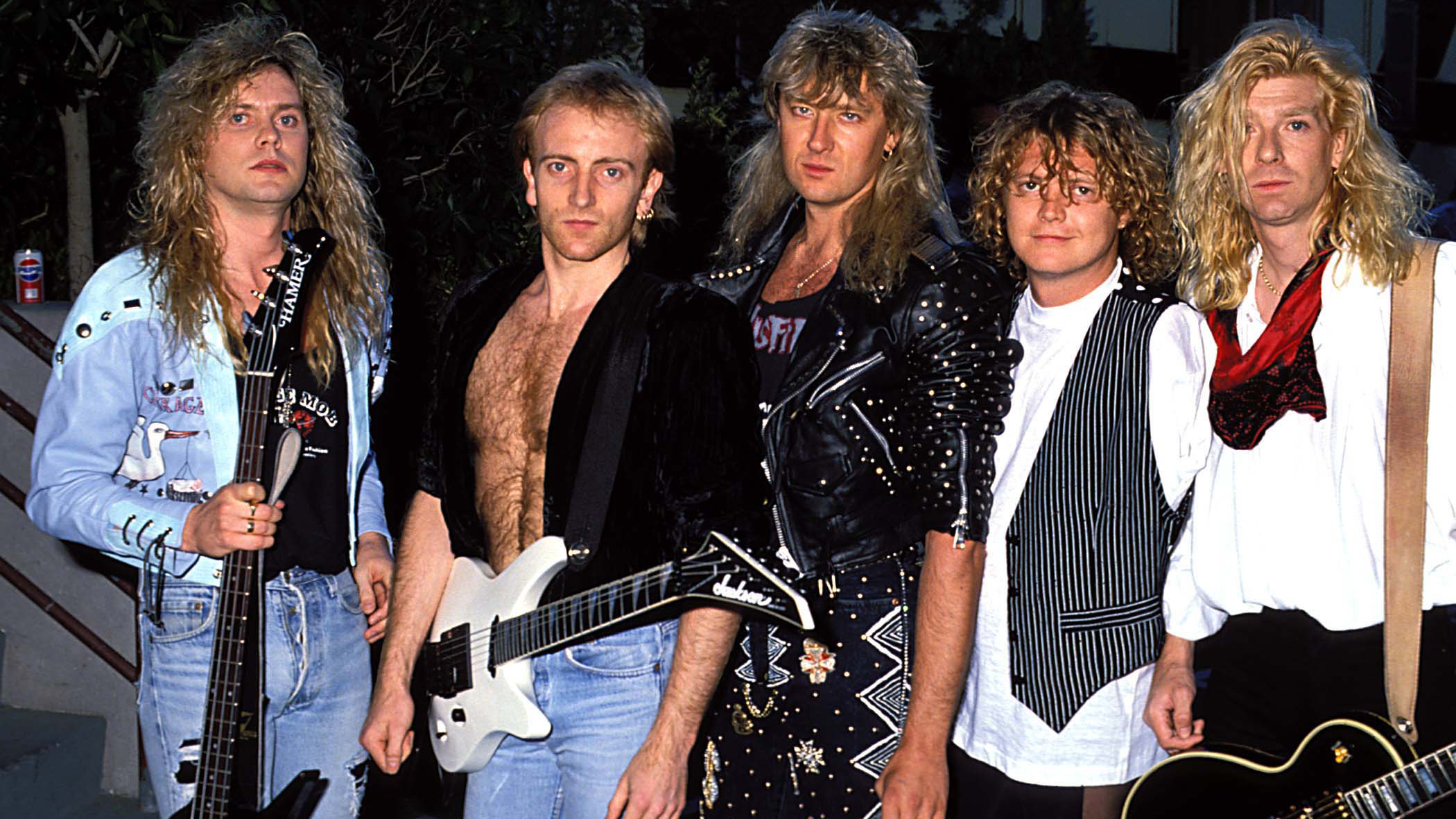
Player: Steve Clark And Phil Collen | Album: Hysteria (1987)
At some point, we just had to go back to the '80s again, and why not do it with this Sheffield band’s ‘rock’ version of Thriller? And a lot of the guitar talk about the Hysteria album’s lengthy recording process with producer Mutt Lange centres on obsessive tales of tracking chords one string at a time to achieve tonal paradiso.
The song Animal took all those three years to get right alone. The 25 million+ sales suggest it was time well spent and that finely-honed feel of the lush chorus cleans and crystal precise palm mutes of Phil Collen and the late Steve Clark can still be captured with a pedal combination for the title track.
Compression and chorus with a frosted icing of delay is a highway to the danger zone of 80s tonality (see also Run To You by Bryan Adams) but if you want to add a surprisingly effective additional layer of multi-band compression to get you closer to Hysteria, try a Boss Acoustic Simulator on the Jumbo setting with Body set down and Top up (full credit to player John Dale below for that).
And please don’t forget to pour some sugar on those ringing chords with your tremolo arm - it’s essential for Leppard.
25. Comfortably Numb
It’s natural to blur the lines between a great performance and a great tone - they are interconnected, after all. But there’s no doubt that David Gilmour was great at dialling his Pink Floyd tones in. And for his greatest moment, in fact, probably the greatest guitar moment when it comes to sheer majesty, he totally aced it.
“I just went out into the studio and banged out five or six solos,” Gilmour told Guitar World in 1993 in his typical, matter-of-fact manner. “From there I just followed my usual procedure, which is to listen back to each solo and mark out bar lines, saying which bits are good. Then I just follow the chart, whipping one fader up, then another fader, jumping from phrase to phrase and trying to make a really nice solo all the way through.”
Mission successful. It’s important to note that the track was doubled with slight delay for a bigger layered sound with some compression for attack. The Comfortably Numb solos were played using a heavy pick, his iconic black Fender Strat with maple neck through an Electro- Harmonix Big Muff and delay via a Hiwatt DR103 amp and a subtly mixed Yamaha RA-200 rotating speaker cabinet. Of course, there’s also the small matter of touch…
“It really is just his fingers, his vibrato, his choice of notes and how he sets his effects,” says longtime tech Phil Taylor. “I find it extraordinary when people think they can copy his sound by duplicating his gear.” But it’s a start, right? The rest is up to you!
Total Guitar is Europe's best-selling guitar magazine.
Every month we feature interviews with the biggest names and hottest new acts in guitar land, plus Guest Lessons from the stars.
Finally, our Rocked & Rated section is the place to go for reviews, round-ups and help setting up your guitars and gear.
Subscribe: http://bit.ly/totalguitar
“For those on the hunt for a great quality 12-string electro-acoustic that won’t break the bank, it's a no-brainer”: Martin X Series Remastered D-X2E Brazilian 12-String review
MusicRadar deals of the week: I'm feeling this! Score an impressive £350 off the Fender DeLonge Starcaster, as well as hundreds off Epiphone, Gretsch, Gibson and more
